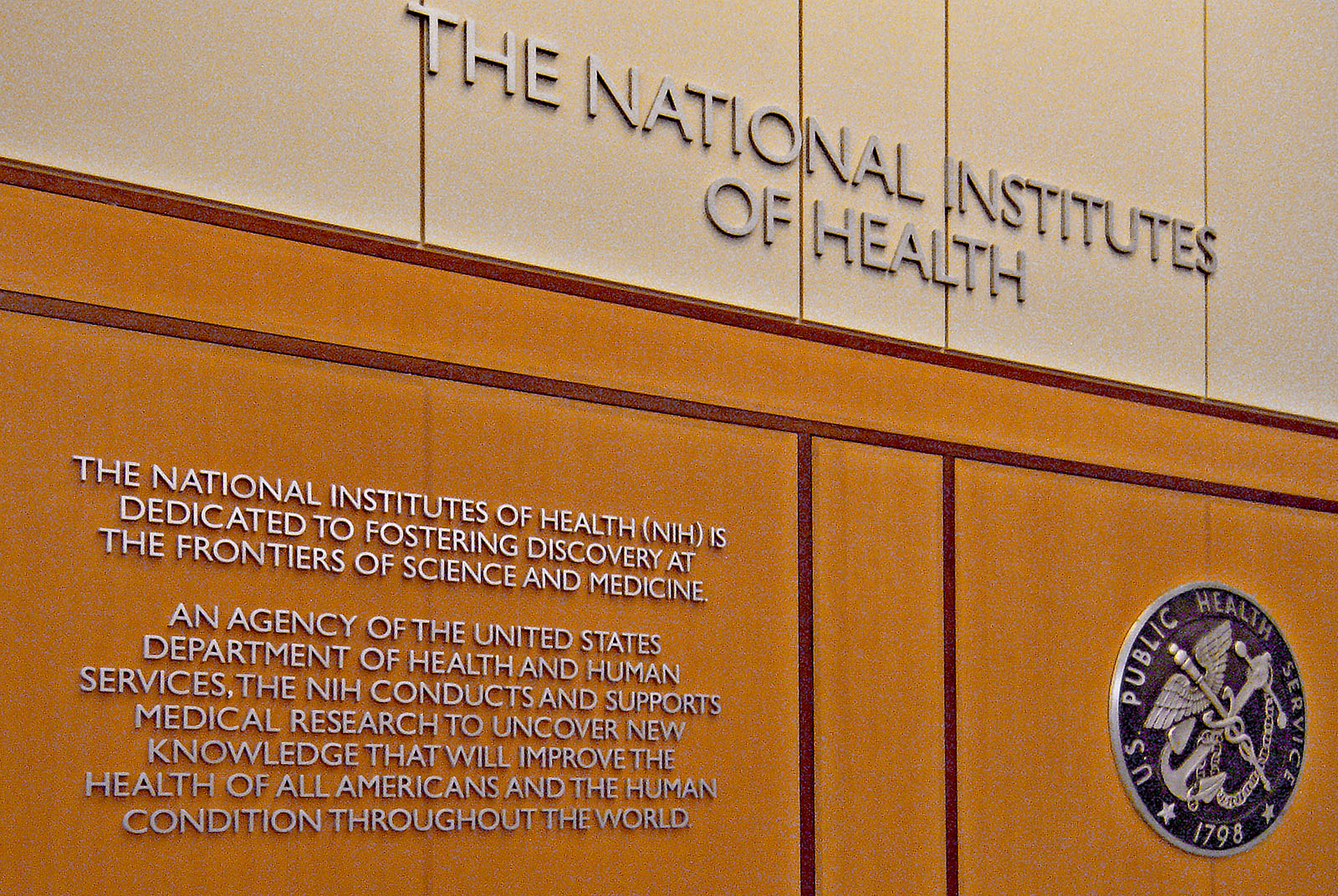National Institutes of Health (U.S.)
Enlarge text Shrink text- Como utilizar el catéter Hickman, 1990:cover (Institutos Nacionales de Salud)
- Su familia se merece los mejores alimentos!, 1995:t.p. (Institutos Nacionales de la Salud) p. 2 of cover (Departamento de Salud y Servicios Sociales de los Estados Unidos)
- National Cancer Institute (U.S.). Fact book (Online) 1972:PDF cover (U.S. Department of Health, Education, and Welfare, National Institutes of Health)
- Report of the NIAID Task Force on Immunology [MI] 1998:t.p. (U.S. Department of Health and Human Services, National Institutes of Health)
The National Institutes of Health (NIH) is the primary agency of the United States government responsible for biomedical and public health research. It was founded in 1887 and is part of the United States Department of Health and Human Services. Many NIH facilities are located in Bethesda, Maryland, and other nearby suburbs of the Washington metropolitan area, with other primary facilities in the Research Triangle Park in North Carolina and smaller satellite facilities located around the United States. The NIH conducts its scientific research through the NIH Intramural Research Program (IRP) and provides significant biomedical research funding to non-NIH research facilities through its Extramural Research Program. As of 2013, the IRP had 1,200 principal investigators and more than 4,000 postdoctoral fellows in basic, translational, and clinical research, being the largest biomedical research institution in the world, while, as of 2003, the extramural arm provided 28% of biomedical research funding spent annually in the U.S., or about US$26.4 billion. Basic research by the NIH contributed to every new drug approved by the Federal Drug Administration over the period 2010–2016. The NIH is responsible for many scientific accomplishments, including the discovery of fluoride to prevent tooth decay, the use of lithium to manage bipolar disorder, and the creation of vaccines against hepatitis, Haemophilus influenzae (HIB), and human papillomavirus (HPV). In 2012, the NIH comprised 27 separate institutes and centers of different biomedical disciplines. In 2019, the NIH was ranked number two in the world, behind Harvard University, for biomedical sciences in the Nature Index, which measured the largest contributors to papers published in a subset of leading journals from 2015 to 2018.
Read more on Wikipedia >
 Corporate Body
Corporate Body










